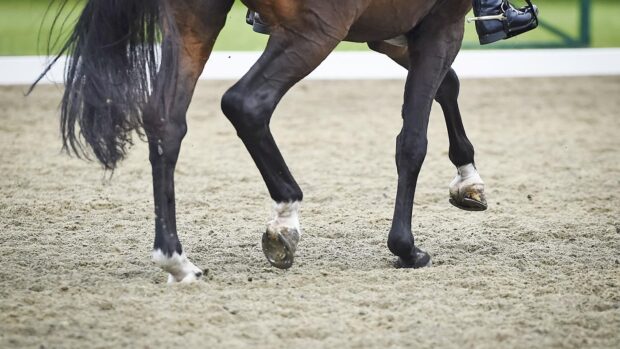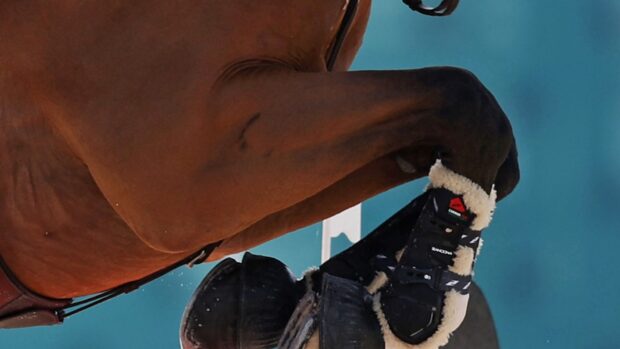A new FEI dressage rule raising the qualifying score to progress in CDI4* and CDI5* shows has caused disappointment for riders and frustration for show organisers.
Since January, riders must score a minimum of 65% in the grand prix to participate in the grand prix special or grand prix freestyle at the same show. In CDI3* shows, such as those due to be held this year at Hickstead, Wellington, Hartpury and Keysoe, the qualifying score remains at 60%.
But the rule could have major implications for Britain’s only CDI4*, Royal Windsor Horse Show (RWHS).
British Olympic dressage rider Richard Davison, who helps organise RWHS and has competed in CDIs there many times, is unclear what the rule is meant to achieve.
“It cannot be to protect horse welfare since there are other more effective provisions which can – and should – be enacted during the test to protect horses,” he said. “On that basis, it must be aimed at upholding minimum standards, but for whose benefit?
“If a minimum standard threshold is to protect the reputation of our sport, as perceived by spectators or viewers, I’d be interested to know what data or information gathering the cut-off point was based on.”
It does not take many mistakes for a horse who usually scores in the upper 60s – spooks or applause from another arena – to drag a score below 65%, effectively ruling them out of the rest of the show.
In championships, where around 30 combinations start in the grand prix, there is no minimum eligibility score to continue to the next test, as most score above the minimum eligibility requirements to qualify — two scores of 66% for the Europeans and 67% for the Olympics.
At the CDI4* at the Global Dressage Festival in Wellington, Florida, on 24 March, the showcase Friday night freestyle – under lights, with a packed audience and full VIP experience – the field of competitors was reduced to six.
Of 19 starters in the grand prix, six failed to score 65% or more. As a result of the new rule, just seven contested the grand prix special. Under the old rules, all six of the riders who could not progress would have been eligible to do so with their plus-60% scores.
Show organiser of the festival, Thomas Bauer told H&H: “It was sad because we lost a few riders because of the new rule. We tried to object before it came into effect, but unfortunately were not successful, so we were down to six. I wish it could have been more.”
The top three riders in the class all agreed, branding the change retrogressive and not in line with the FEI’s mandate to promote participation and interest in dressage. They accepted that the higher qualifying score could be appropriate for five-star shows, but questioned its benefit at four-star.
“I think it’s a pity,” France’s Morgan Barbançon, who won all three four-star classes at the show, told H&H. “Our sport is difficult enough and we have to put a lot into it. Making it more difficult to get to the next step is not going to make people want to follow and be interested.”
Korea’s Dong Seon Kim, who rode Galleria’s Bohemian to third place in the freestyle, added: “For the sport to be big, it has to become a big spectator sport with a lot of attention. Just in terms of that, I think it’s not the wisest decision as you could have had many more riders and a lot more attention and people.”
Richard agreed: “Inclusivity is critical to the development of our sport and never more so in times of rising costs,” he said. “Travelling to any FEI competition, especially cross-border, is eye-wateringly expensive. As this rule could mean competitors might ride only one test, it’s counter-productive.”
The FEI said: “In CDI4* and 5*, where those [participation] figures are hardly ever reached, the best-ranked combinations compete twice at the most during a weekend. This raises the percentage athletes aspire to achieve adding to the competitive level.
“This rule change was unanimously approved by the dressage committee as well as the majority of the national federations during the consultation process and then the general assembly. It was perceived as an upgrade and added value.”
You might also be interested in:

Defending champions off to winning start at Dressage World Cup Final – despite ‘expensive hiccups’

Anna Ross: ‘Talent alone is not enough to stay at the top in dressage’

Subscribe to Horse & Hound magazine today – and enjoy unlimited website access all year round
Horse & Hound magazine, out every Thursday, is packed with all the latest news and reports, as well as interviews, specials, nostalgia, vet and training advice. Find how you can enjoy the magazine delivered to your door every week, plus options to upgrade your subscription to access our online service that brings you breaking news and reports as well as other benefits.




